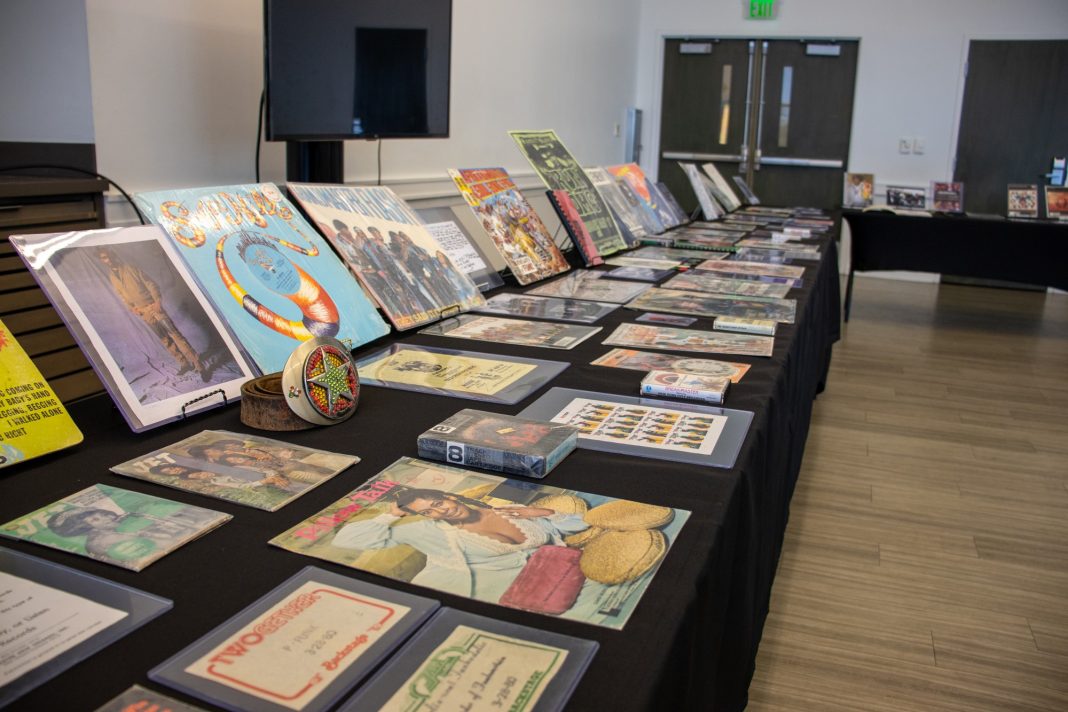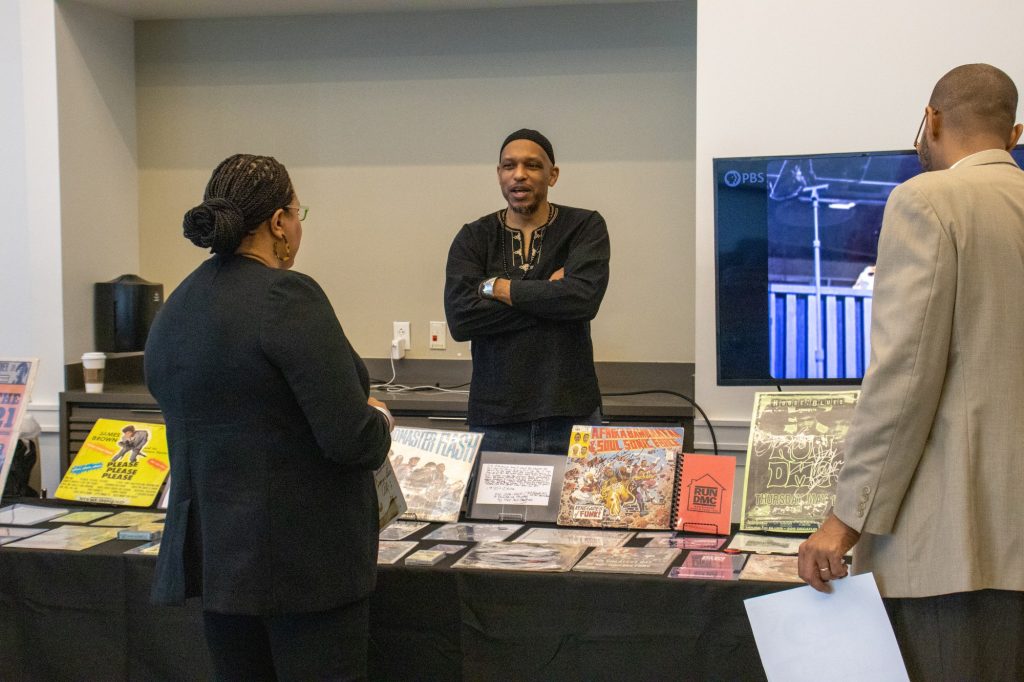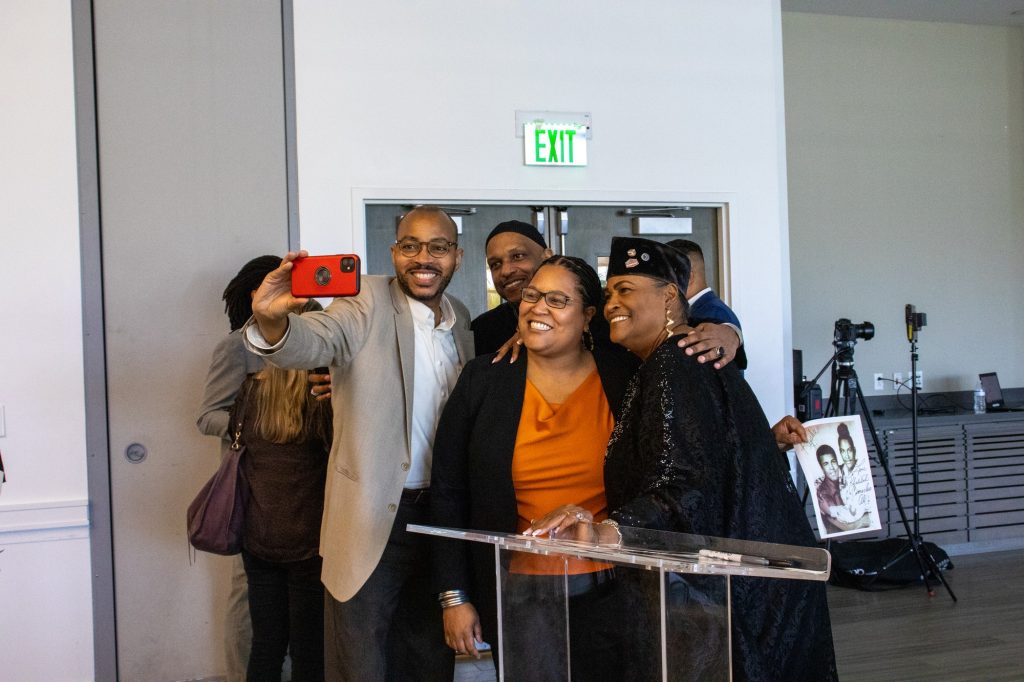
Museums tell stories that are larger than life, and the Black History Mobile Museum, which visited UM last Thursday, does just that on a daily basis. The museum features different topics from the African American story, taking viewers on a journey through the trans-Atlantic slave trade to modern-day Black liberation.
Authentic artifacts like historical drawings and memorabilia chronicle the founding of the Black Panther Party, the start of hip-hop, and the first Black president. The order in which one is supposed to view the exhibit conveys a strong feeling of resilience within a community that has long been disenfranchised.
Dr. Khalid el-Hakim, the founder of the Black History Mobile Museum, did not originally intend to create a museum.
“Initially, it was [just] a personal collection I had… and taught me about my history. For me, it reinforced a sense of identity and a connection to history for me,” Dr. el-Hakim said.
Upon coming home from the 1995 Million Man March in Washington D.C., Dr. el-Hakim decided to make his collection accessible to the public.
“From historical drawings from the motherland to hip-hop’s continuing influence…it showed me that our pain and expression of music doesn’t just stop at the song — it continues to snowball into more and more creative outlets,” Grace Altidor, a senior health sciences major, said.
As a social studies teacher in the Detroit area, Dr. el-Hakim wanted to bring “primary source material to the public school classroom to engage students.”

The Black History Mobile Museum offers a unique viewing experience where primary sources are laid out on a table, making it easier for visitors to “converse” with objects that grab their attention.
“I was able to speak to Dr. el-Hakim and learn about his approach to collecting and preserving history,” Asia Chester, a senior biochemistry and global health studies major, said. “He jokingly told me some of the stuff is probably too valuable to have on display.”
The first part of the museum contains racist images and advertisements that expose painful truths. To illustrate the strength of the Black community, there is a “Deed of Trust” signed by Frederick Douglass next to these caricatures.
Below the signed picture of Frederick Douglass is a sticker with his quote, “It is easier to build strong children than repair broken men.” These wise words allow viewers to connect to the emotions of generational trauma and this lamentable time period.
“A part of the museum that resonated with me was the discussion on the ways in which hip-hop’s impact has influenced things from alternative Marvel comic posters to Obama’s campaign posters,” Altidor said.

The last part of the exhibit features former President Barack Obama’s road to the White House with support from the Black community. There is a small flyer encouraging people to register to vote from U.S. rapper Jay-Z. Near the Barack Obama memorabilia rests a Vanity Fair magazine with Breonna Taylor on the cover, highlighting the fact that achieving social equality is still a work-in-progress.
Primary sources are powerful. While people have seen the signs for segregated restrooms in photos, few people have seen them in-person. Viewing these in real life gave museum-goers the perspective of people living in the Jim Crow era, a brief glimpse into the everyday realities of Black Americans.
This exhibit proves that mobile museums have a lot to offer, as the amount and quality of the content was impressive. It is especially important for people to see history and learn about it both visually and interactively.
“Events like these help me to feel truly happy to be Black,” Jené Turner, a first-year political science major, said. “I feel that there is a lot of pride and creativity that comes with the Black experience.”
Dr. el-Hakim hopes that viewers leave the exhibit seeing “the value of stories that need to be told.”
“It was refreshing to hear how he prefers viewers to truly experience the exhibit, allowing us to feel and look through the objects,” Chester said. “I felt empowered to start collecting artifacts of my own.”
If you missed the Black History Mobile Museum or want to learn more, the PBS special “Fight the Power: How Hip Hop Changed the World” — which played at the exhibit — is worth a watch.





